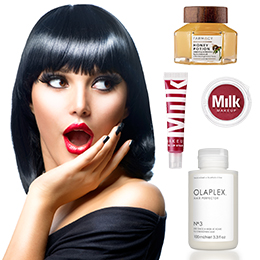Indies, beauty’s notable market movers, are disrupting categories across the board with innovative product offerings and utilizing social media platforms to appeal to experimental consumers. Kline’s new Beauty’s Most Buyable Brands: Global Tracking Service will take a close look at these disruptors and assess what makes them relevant in today’s marketplace. In the following interview, Kline’s experts answer important questions on this upcoming report.
Can you name a few brands that, according to your study, are moving markets?
There are so many brands that I can name that have disrupted various categories with their unique propositions. In hair care, we can’t miss the U.S.-born brand Olaplex, which created a whole new category of bond builders and expanded its distribution across the globe in just a couple of years. In skin care, I can’t help but talk about another U.S.-born brand—Farmacy, which brings honey potions to consumers’ faces. In makeup, Milk Makeup is one brand that stands out, with a gender-free marketing campaign that takes makeup to a different level. Among many of the international brands included are Korean-born Nature Republic and Middle Eastern cosmetics brand Huda Beauty.
How are these companies able to succeed in the highly competitive marketplace?
These companies have a unique offering—introducing a concept, ingredient, or treatment. They also usually have strong social media followings and are able to connect with consumers on a more personal level. Instead of using perfect models and almost unreachable standards, they use real people, with consumers posting pictures of themselves to show product results or collaborating with influencers to get the word out about product launches and developments.
If you had to name one underlying factor for their appeal to the consumers, what would it be?
They listen to their customers and respond accordingly, almost personalizing their consumers’ requirements on a large scale.
How do the large cosmetics giants respond to these disruptors?
They acquire them! Indies often set trends, and large companies either introduce products that are in line with those trends or simply acquire the indie brands to get a foothold in the specific niche market and grow accordingly. In 2016, there was a buying spree of indie brands by larger marketers. Some of them include L’Oréal’s acquisition of IT Cosmetics and Atelier Cologne, Estée Lauder’s acquisition of Becca, Too Faced, and By Killian, and, of course, Coty’s continuous expansion included entering into an agreement with the direct-selling company Younique. They also try to emulate them by being more socially and digitally centered with their marketing efforts.
Do you think that the indies will continue on such a high trajectory path? Breaking rules and outgrowing their iconic counterparts?
The only factor that is constant in beauty is change. Consumers love and welcome novelty—whether it’s in the form of a new concept, product, ingredient, or marketing strategy. Thanks to low-cost social media platforms that can help get the word out, there will continue to be small, niche brands that grab the market’s attention, gain a cult-like following, and become the next billion dollar buyout.
To learn more about the latest and greatest beauty disruptors, please refer to our Beauty’s Most Buyable Brands: Global Tracking Service, which will track sales figures, growth rates, core competencies, geographic strength, marketing activities, and distribution strategies for over 100 vibrant indie brands.

